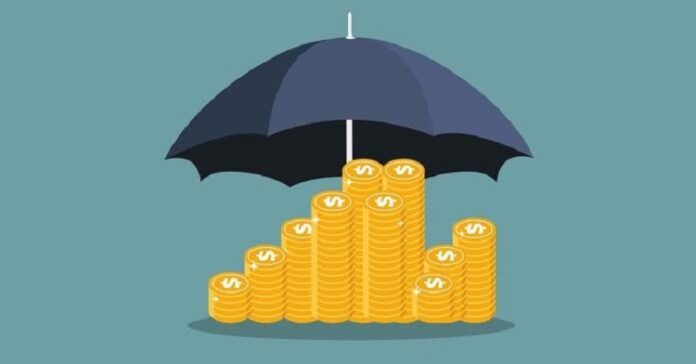In the complex world of stock markets, investors need a compass to navigate the ever-changing terrain. Whether you’re a seasoned trader or a novice investor, understanding the ebb and flow of market cycles is paramount to making the right choices with your money. At the core of this navigation system are two types of stocks that behave quite differently: cyclical and defensive. This article will explore the vital differences between these stock types, drawing a roadmap that can guide you through various market scenarios and how to steer your investments towards the brightest horizons.
The significance of market cycles
Market cycles are a natural progression of an economy that experiences periods of expansion, peaks, contraction, and troughs. These cycles are born from supply and demand imbalances, investor sentiment, and various external factors. Understanding these patterns can help predict when certain stocks or sectors are more likely to perform well. Saxo Bank is one institution that publishes regular reports on market cycles and their impact on investments. Investors can make informed decisions and create resilient portfolios by analysing these cycles and keeping an eye on economic calendar that documents global economic events.
Cyclical stocks
Cyclical stocks are intrinsically linked to the economy’s health, thriving when it’s booming and faltering when it’s in recession. These stocks belong to businesses that operate in sectors that see demand surges during economic upturns.
Cyclical stocks are susceptible to economic factors, showing substantial revenue and earnings growth during economic expansions. They are typically tied to discretionary spending and big-ticket items like luxury goods, travel, and construction materials.
Industries associated with cyclical stocks include consumer durables, technology, and industrials. Retail is a prime example, where companies that sell high-priced items, like cars or appliances, will experience fluctuations in consumer demand based on the economy’s strength.
Defensive stocks
Defensive stocks belong to companies that retain their value and remain stable, even amid economic contractions. These companies provide goods or services that are necessities rather than luxuries.
Defensive stocks have lower betas, indicating less volatility than the overall market. Typically, they provide products and services that people need regardless of the economic climate, like utilities, pharmaceuticals, and consumer staples.
Industries associated with defensive stocks include healthcare, utilities, and food manufacturers. These sectors exhibit steady demand because their offerings are essential for daily living.
Distinctive features of cyclical and defensive stocks
The differences between cyclical and defensive stocks go beyond their performance during economic peaks and troughs.
Volatility and risk levels
Cyclical stocks are inherently more volatile and carry a higher risk level than defensive stocks because their performance is tied to the economy’s overall health, which can be unpredictable and subject to external factors. During periods of economic expansion, cyclical stocks may experience rapid growth, but during recessions, they can plummet just as quickly.
On the other hand, defensive stocks offer a more stable and less risky investment option. Regardless of the economic climate, they tend to have steady demand for their products or services, making them less susceptible to drastic price fluctuations.
Diversification benefits
A mix of cyclical and defensive stocks in your portfolio can benefit diversification. During periods of economic expansion, cyclical stocks may outperform defensive stocks due to their growth potential. However, during downturns, the stability and resilience of defensive stocks can help mitigate losses in a portfolio.
Different industries and sectors perform differently during market cycles. By exposure to cyclical and defensive stocks across various sectors, investors can spread their risk and potentially see more consistent returns over time.
Revenue and earnings patterns
Cyclical and defensive stocks also have distinct patterns in their revenue and earnings. Cyclical stocks tend to have higher peaks and lower troughs, as their performance is closely tied to the economy’s overall health. During economic expansions, these stocks may see a surge in demand for their products or services, leading to higher revenues and earnings. However, during recessions, their revenue and earnings may decline significantly. Cyclical stocks fluctuate with the economy, and Ncespro helps investors analyze these trends for better decisions.
Meanwhile, defensive stocks have more stable revenue and earnings patterns, as their offerings are essential goods or services with consistent demand. This stability is reflected in their lower betas and provides investors with a more predictable income stream.
Navigating the complexities of market cycles
Investing in the correct type of stock at the right time can significantly impact your portfolio’s performance.
Strategies for different cycles
During economic expansions, it’s advisable to focus on cyclical stocks, which can benefit from increased consumer spending and business investments. However, this is also the time to be cautious and conduct thorough research, as the higher risk can lead to significant losses if the economy falters.
In contrast, shifting towards defensive stocks can offer stability and protection for your investments during economic downturns. This move can provide a defensive position that might not soar but can help your portfolio hold its ground.
Diversification as a critical tool
Diversifying your portfolio by including cyclical and defensive stocks can mitigate risks and ensure your investments are positioned across different sectors and market conditions. By doing so, you are not only protecting your capital but also guaranteeing some level of growth potential.


















